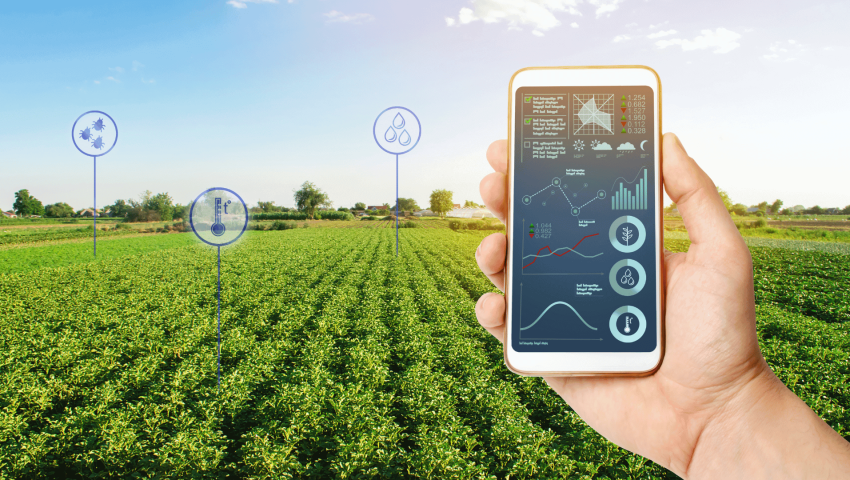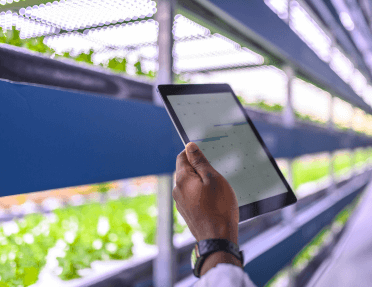
Leveraging Technology to Improve Farm Operations
Technology is transforming farm operations in Australia. This blog explores how integrating advanced tech solutions can optimize efficiency, reduce costs, and improve overall farm management.
“Embracing agricultural technology is not just about innovation; it's about creating sustainable, efficient, and profitable farming practices for the future.”
The Digital Revolution in Agriculture
The agricultural sector is undergoing a profound transformation, driven by rapid advancements in technology. This digital revolution, often referred to as Agriculture 4.0, is reshaping farm operations across the globe, offering unprecedented opportunities for efficiency, productivity, and sustainability.
At the heart of this revolution is the Internet of Things (IoT), which allows for the interconnection of various devices and sensors throughout the farm. These smart devices collect and transmit real-time data on everything from soil moisture and crop health to livestock behavior and equipment performance. This wealth of information enables farmers to make data-driven decisions, optimizing resource use and improving overall farm management.
Precision agriculture, a key component of this technological shift, utilizes GPS technology, automated steering systems, and variable rate application techniques. These technologies allow farmers to treat crops, soil, and livestock with extreme accuracy, reducing waste and maximizing yields. For instance, precision planters can adjust seed spacing based on soil conditions, while variable rate fertilizer applicators can distribute nutrients according to specific field requirements.
Artificial Intelligence (AI) and Machine Learning (ML) are also making significant inroads in agriculture. These technologies can analyze vast amounts of data to predict crop yields, detect plant diseases early, and even optimize harvesting schedules. AI-powered systems can also assist in livestock management, monitoring animal health and behavior to predict and prevent potential issues.
Drones and satellite imagery are revolutionizing field monitoring and crop assessment. These aerial technologies provide farmers with a bird's-eye view of their operations, helping to identify problem areas, assess crop health, and even assist in precision spraying of pesticides or fertilizers.
As we delve deeper into this technological landscape, it's clear that the future of farming is increasingly digital. However, it's crucial to remember that these technologies are tools to enhance human expertise, not replace it. The successful integration of technology in farm operations requires a balanced approach, combining innovative solutions with traditional farming wisdom.
Enhancing Workforce Management through Technology
While much of the focus on agricultural technology centers around crop and livestock management, its impact on workforce management is equally transformative. Innovative technologies are streamlining human resource processes, improving worker safety, and enhancing overall operational efficiency on farms.
Farm management software has become an indispensable tool for modern agricultural operations. These comprehensive platforms integrate various aspects of farm management, including employee scheduling, task allocation, and performance tracking. Advanced systems can optimize work schedules based on weather forecasts, crop conditions, and individual worker skills, ensuring that labor resources are utilized efficiently.
Mobile applications are revolutionizing communication and task management on farms. These apps allow for real-time communication between managers and field workers, enabling quick dissemination of information and immediate reporting of issues. Some apps also incorporate GPS tracking, allowing managers to monitor the location and progress of workers across large agricultural properties.
Wearable technology is making significant strides in improving farm worker safety. Smart helmets and vests can monitor vital signs, detect falls, and even alert workers to potential environmental hazards. These devices not only enhance safety but also provide valuable data for improving work processes and identifying areas for additional training.
Virtual and Augmented Reality (VR/AR) technologies are emerging as powerful tools for training farm workers. These immersive technologies can simulate various farming scenarios, from equipment operation to complex harvesting techniques, allowing workers to gain practical experience in a safe, controlled environment. This is particularly valuable for seasonal workers who may need to quickly acquire new skills.
Biometric systems are enhancing security and streamlining time and attendance tracking on farms. Fingerprint or facial recognition systems can accurately record worker hours, prevent time theft, and ensure that only authorized personnel access sensitive areas of the farm.
Automated data collection systems are reducing the administrative burden on farm managers. By automating the collection of data on work hours, task completion, and productivity metrics, these systems free up managers to focus on more strategic aspects of farm operations.
As farms continue to adopt these workforce management technologies, it's crucial to provide adequate training and support to ensure smooth implementation. The goal is to create a tech-savvy workforce that can leverage these tools to enhance productivity and job satisfaction.
Overcoming Challenges in Agricultural Technology Adoption
While the benefits of agricultural technology are clear, its adoption is not without challenges. Farmers face several hurdles when implementing new technologies, ranging from financial constraints to technical complexities.
One of the primary challenges is the high initial cost of many agricultural technologies. Advanced machinery, precision agriculture systems, and comprehensive farm management software can require significant upfront investment. This can be particularly daunting for small and medium-sized farms operating on tight budgets. To address this, some technology providers are offering flexible pricing models, including subscription-based services and pay-per-use options.
The rapid pace of technological advancement presents another challenge. Farmers may hesitate to invest in technologies that could become obsolete quickly. This underscores the importance of choosing scalable and upgradable systems that can evolve with the farm's needs and technological progress.
Technical complexity and the need for specialized skills can also be barriers to adoption. Many advanced agricultural technologies require a level of technical expertise that may not be readily available in rural areas. To combat this, agricultural technology companies are increasingly focusing on user-friendly interfaces and providing comprehensive training and support services.
Connectivity issues in rural areas can hinder the effectiveness of IoT and cloud-based technologies. Limited internet access can prevent real-time data transmission and restrict the use of certain smart farming applications. Efforts to improve rural broadband infrastructure are crucial for overcoming this challenge.
Data privacy and security concerns are growing as farms become more digitized. The vast amount of data collected by agricultural technologies can be sensitive, including proprietary farming practices and financial information. Implementing robust cybersecurity measures and understanding data ownership rights are essential steps in addressing these concerns.
Cultural resistance to change can also slow technology adoption. Some farmers may be hesitant to deviate from traditional methods that have served them well in the past. Overcoming this requires demonstrating the tangible benefits of new technologies through pilot projects and peer-to-peer learning opportunities.
Regulatory uncertainties surrounding some agricultural technologies, particularly in areas like drone usage and data collection, can create hesitation among farmers. Clear guidelines and supportive policies from agricultural authorities can help alleviate these concerns.
By addressing these challenges head-on, the agricultural sector can accelerate the adoption of beneficial technologies, leading to more efficient, sustainable, and productive farming practices.

MYHRLINK's AgTech Integration Solutions
MYHRLINK offers comprehensive support for integrating agricultural technologies into your farm operations. From workforce management systems to precision agriculture tools, we help you navigate the tech landscape and optimize your farm's performance.
- Tech Assessment
- Implementation Support
- Ongoing Training
The integration of technology in farm operations represents a paradigm shift in agriculture, offering solutions to long-standing challenges and opening up new possibilities for efficiency, sustainability, and profitability. As we've explored, from precision agriculture and IoT devices to advanced workforce management systems, technology is touching every aspect of farming.
However, the journey towards a fully technologically integrated farm is not without its challenges. The key to successful adoption lies in a strategic, phased approach that considers the unique needs and constraints of each farm. It's crucial to view technology not as a replacement for traditional farming knowledge, but as a tool to enhance and complement generations of agricultural expertise.
As we look to the future, the role of technology in agriculture will only grow. Emerging technologies like blockchain for supply chain transparency, autonomous farm vehicles, and advanced biotechnology promise to further revolutionize the industry. Farmers who embrace these innovations, while thoughtfully navigating the challenges of adoption, will be well-positioned to thrive in an increasingly competitive and complex agricultural landscape.
The human element remains central to this technological revolution. Investing in training and development to create a tech-savvy workforce is as important as investing in the technologies themselves. Furthermore, fostering a culture of innovation and continuous learning within farm operations will be crucial for long-term success.
Ultimately, the goal of leveraging technology in farm operations is not just about increasing productivity or profits. It's about creating more sustainable farming practices, ensuring food security for a growing global population, and preserving the viability of agricultural communities. By embracing technology thoughtfully and strategically, farmers can not only improve their operations but also contribute to solving some of the most pressing challenges facing our world today.
As we continue to navigate this exciting frontier of agricultural technology, collaboration between farmers, technologists, researchers, and policymakers will be key to realizing the full potential of these innovations and shaping a bright future for agriculture.

